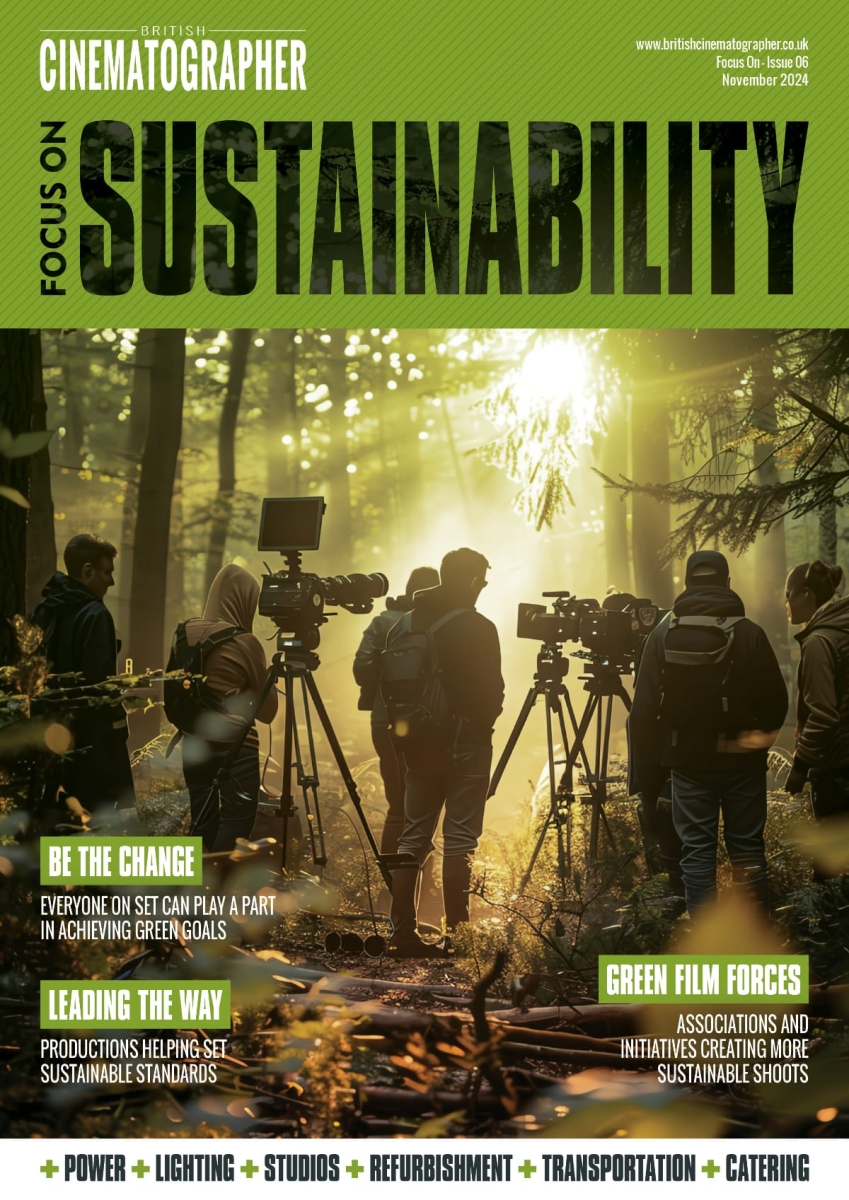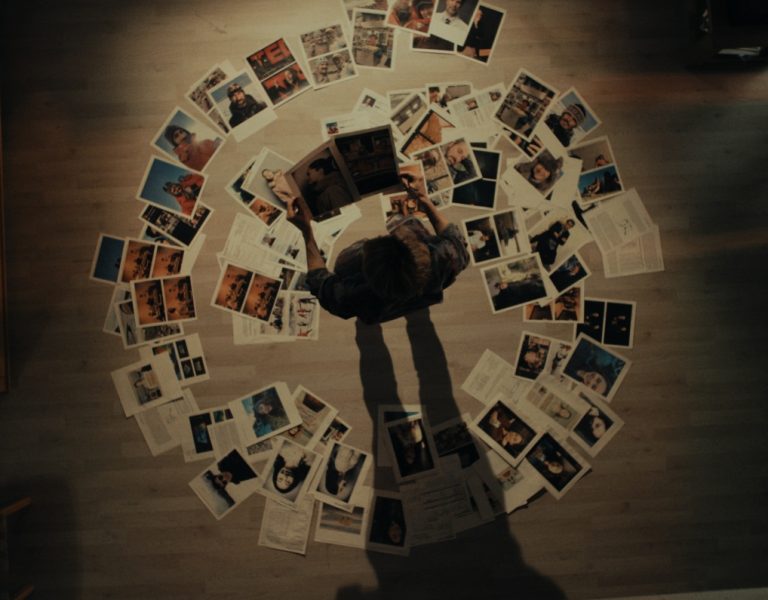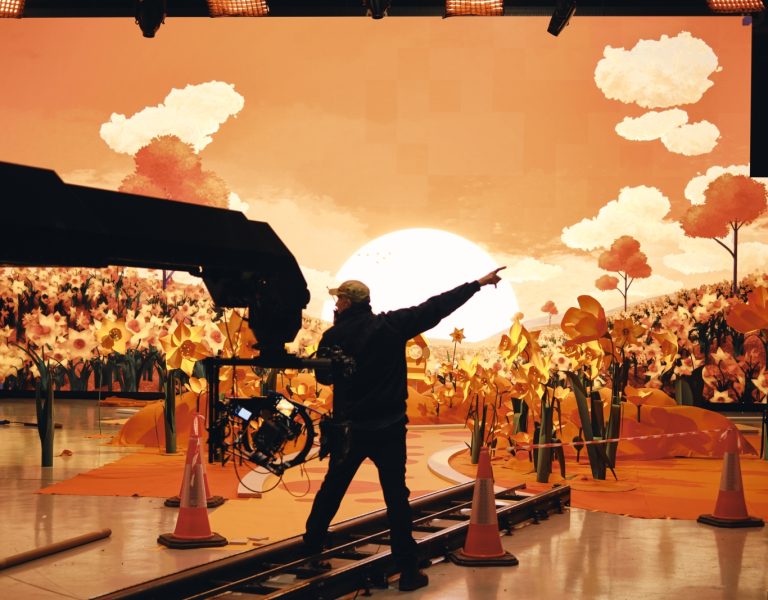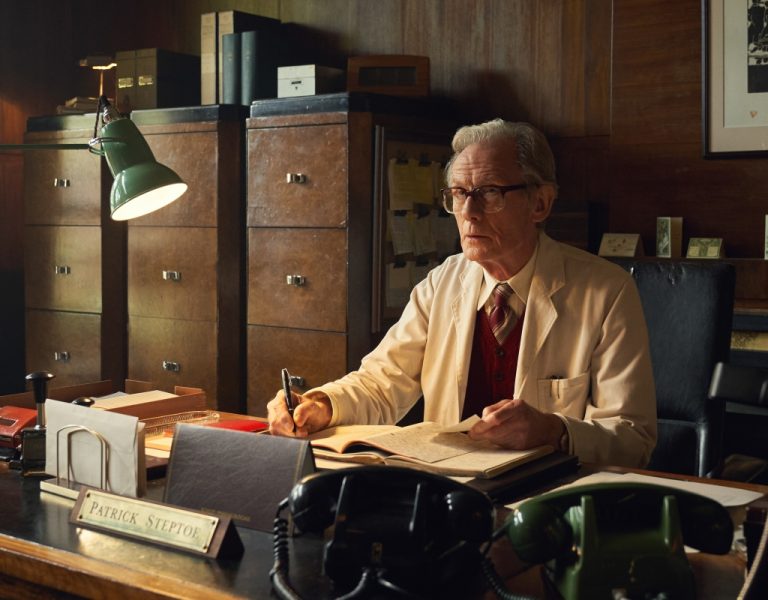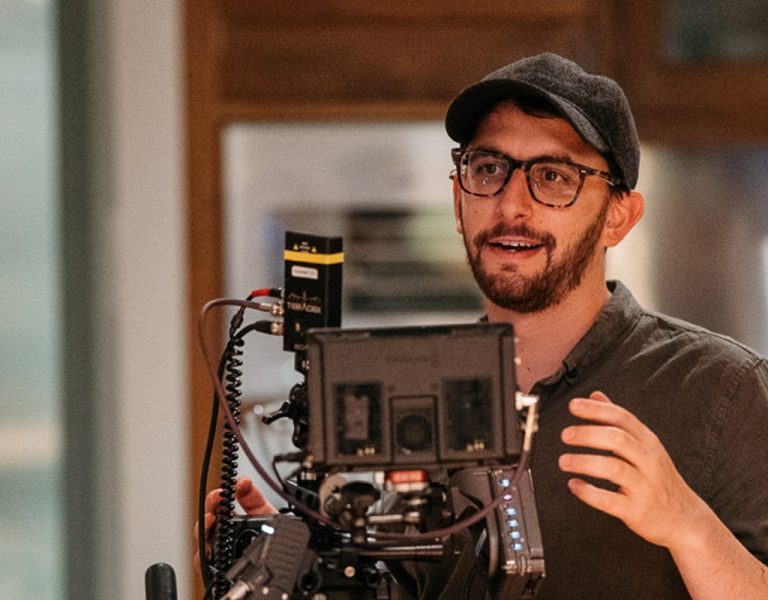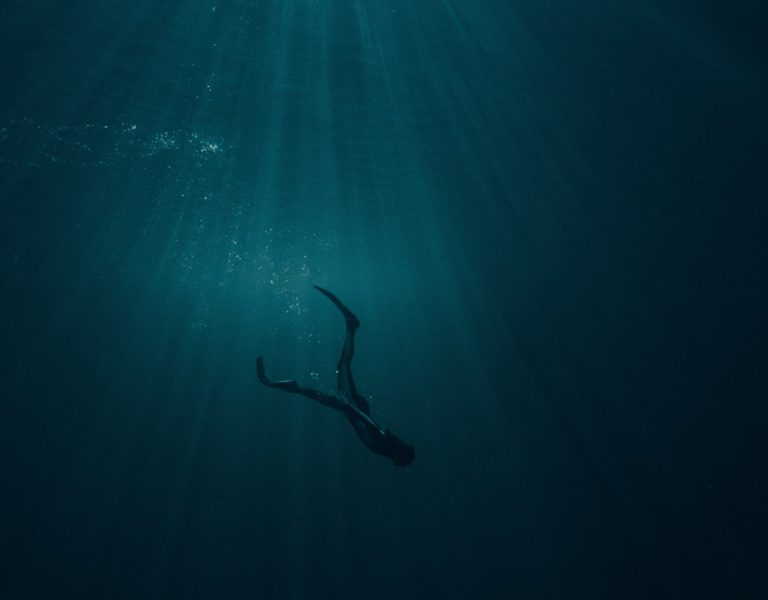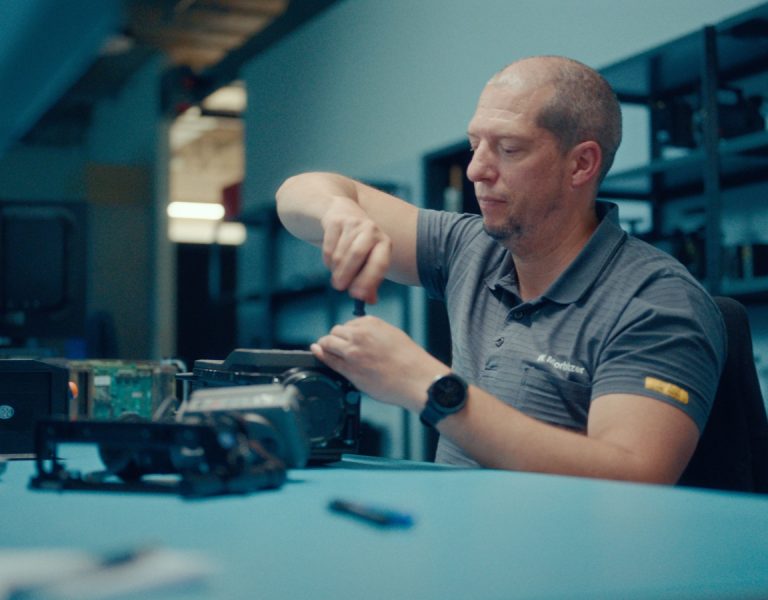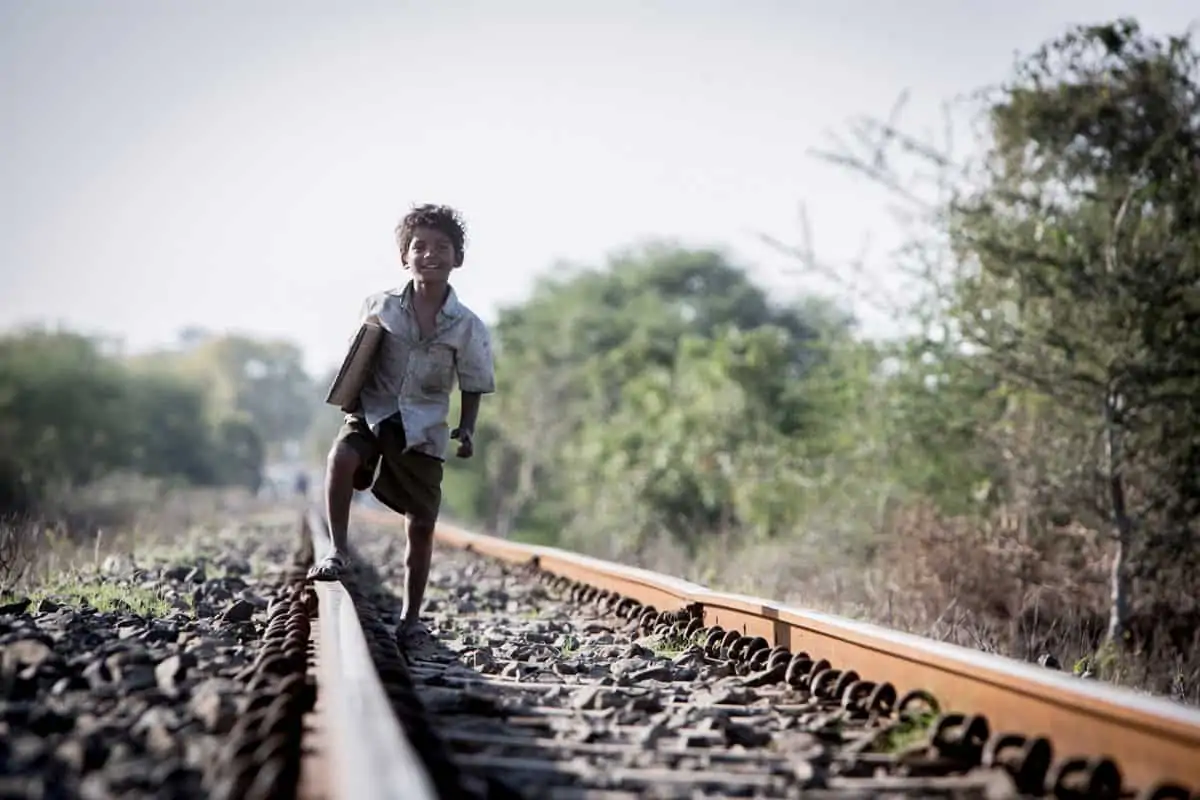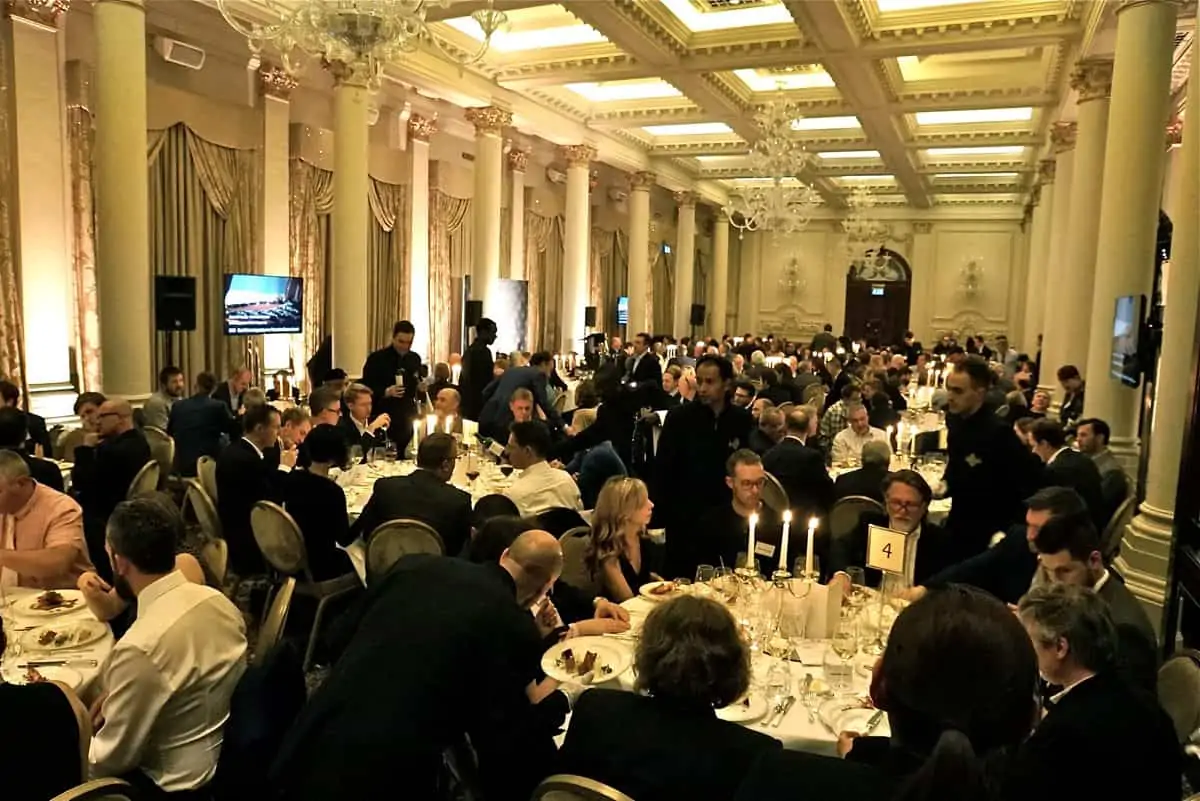Dear Diary
Special Report / Camerimage 2016 Diary / Ron Prince
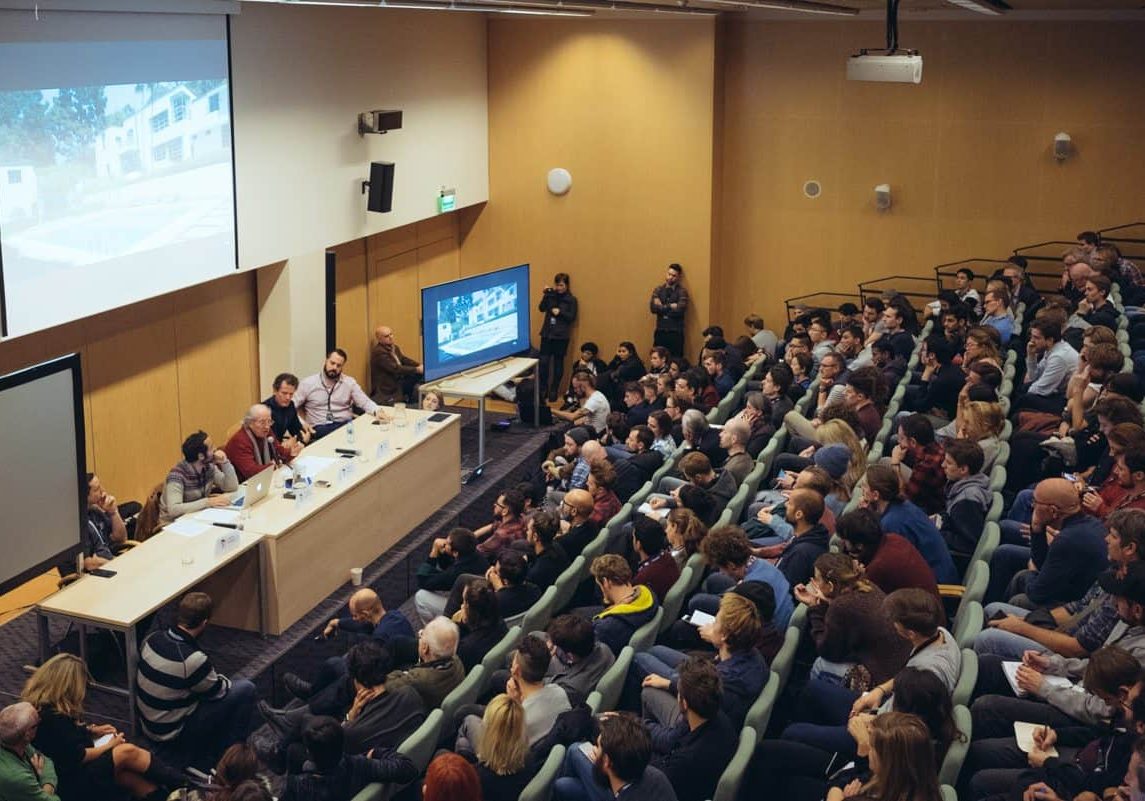
Dear Diary
Special Report / Camerimage 2016 Diary / Ron Prince
One man’s journal of the mirth and merriment at the 2016 Camerimage Festival Of Cinematography in Bydgoszcz.
Monday 14th November:
OMG! It’s 4am! I only checked in at the Radisson Blu at midnight. So a pot of pre-flight porridge with Judith Evans from ARRI is most welcome, despite Stansted’s lurid duty-free zone as the backdrop. OMG! The flight to Bydgoszcz is delayed, and the shuttle bus has gone to the wrong plane on the tarmac. Someone quips that Ryanair has not completely given up its passive/aggressive policy towards passengers. My travelling companion is Molinare MD Steve Milne, who chats about his producing role on new British features, including a special on Spitfires. Incoming kisses received from Kim Snyder of Panavision, Oona Menges, Katie Swain, Kate Kotcheff from Wizzo and from Angus Hudson BSC, as the flight fills up. Chats mid-flight with Marc Dando of Codex about the VR experience, and Mark Purvis from Mission Digital about the experience of on-set data wrangling.
Regardless of our well-tardy arrival, The Holiday Inn is still serving breakfast, although I eat completely alone. It’s quite a laugh when Hugh Whittaker plus a Panavision delegation stop in-passing and snap a photo of me and my non-existent fan club. Panavision are hosting special presentations of the new DXL 8K camera at the hotel, and will launch the new lump at 12-noon at the Opera Nova. On my ownsome again, I recall chatting to the dear, departed Fred Goodich ASC and Vilmos in this very room during festivals of yore. Unpacked, I bone up on Kodak’s Film On Film gig I’m hosting later this week with Matyas Erdely HSC, who will be speaking about his work on Son Of Saul, and then head to the Opera Nova to register for my pass.
The nod. It has always amused me that entry to the Opera Nova, under the scrutiny of Robert and Robert, Camerimage’s security boys, involves a slight bend of the upper torso in order to place one’s lanyard pass on the entry scanner. It’s as though we are obliged everyday to bow down with a sort of religious deference before we are allowed to enter, or leave, this house of cinematographic worship.
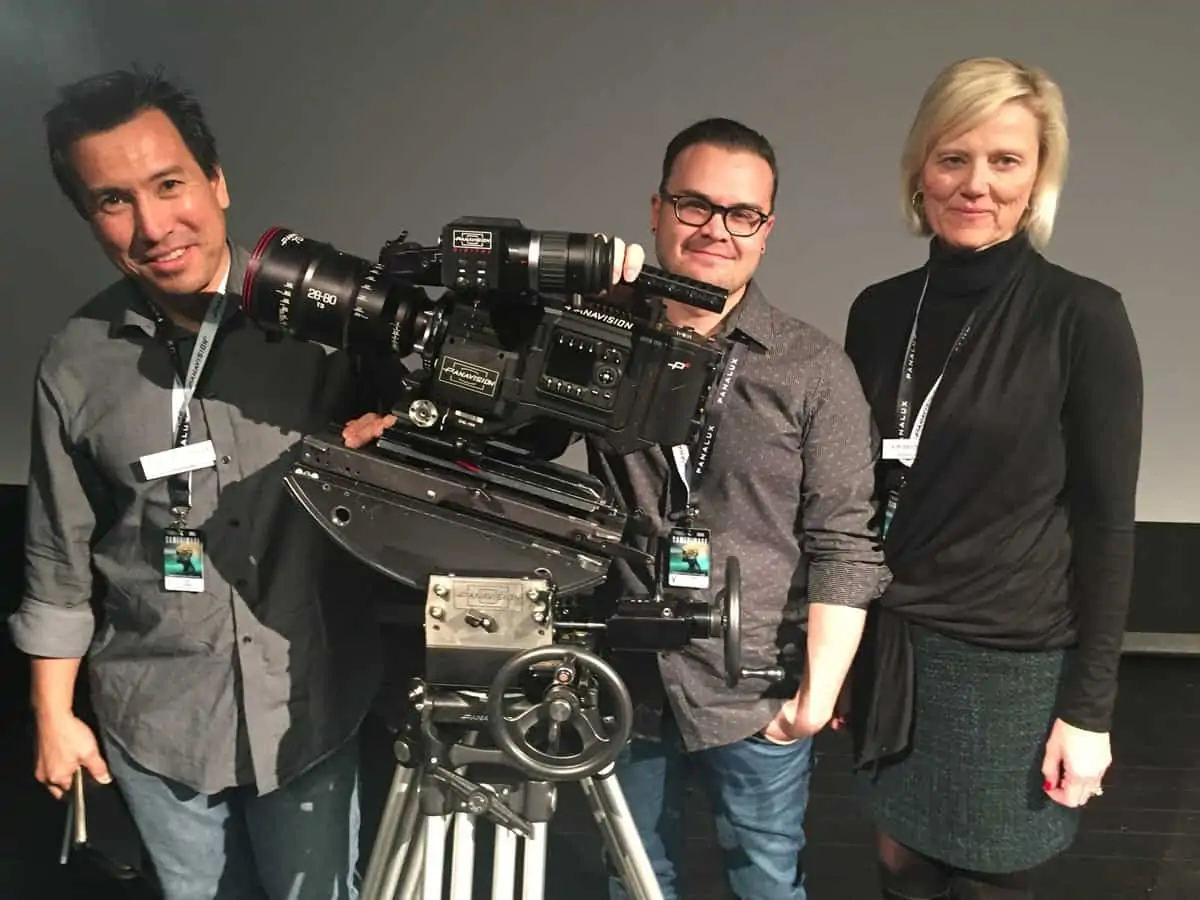
Greetings from Nigel Walters BSC, Richard Andry AFC and Michael Seresin, amongst others, in the throng surrounding the launch of the DXL. Swept-up with the excitement, I find myself at the MCK Orzel Cinema, which Panavision has taken over most afternoons this week, for the presentation of the DXL en masse. Fronted by the singular Michael Cioni, who could probably sell multiple icecream flavours to multiple Eskimos, this presentation has pizzazz aplenty. I suppose t’would ever be thus, as Panavision is, after all, Panavision, and ought really to have been at the large format digital party before now. But OMG! The DXL is not just a camera with optics for rent. If it works, here is a masterstroke of thought and deed – an end-to-end, forward-looking ecosystem, encompassing pretty much everything you could want technically from pre-production to distribution, that considers the needs of all departments in the moving-image creation chain. “We want DPs to fall in love with the DXL and the pictures it creates,” declares Cioni. “But operators, assistants, DITs, editorial, DI, VFX, directors, producers and studio execs, plus cinema, OTT and web distribution are all factored in too.” Blimey, I need a cup of tea.
And that cuppa turns out to be with Anthony Dod Mantle DFF BSC ASC, who’s in fine fettle, sporting a foxy-looking Swedish fur hat, here on jury service and with Snowden in competition. Farage, Trump, the need for a counter-culture, fewer sequels and more diversity are on our conversational menu, as we chomp on chocolate wafers washed down with milky herbata.
They still have the same stupid seating policy in the Opera Nova (Row Z or dreadful diagonals for the press, good seats for everyone else) as I try to find a decent spot for the screening of Moonlight. “This is a tale of friendship. But it does not belong to us, it belongs to you,” says cinematographer James Laxton in the preamble to wild applause. This well-made, touching, Black, coming-of age, coming-out tale is very timely given the Trump era ahead.
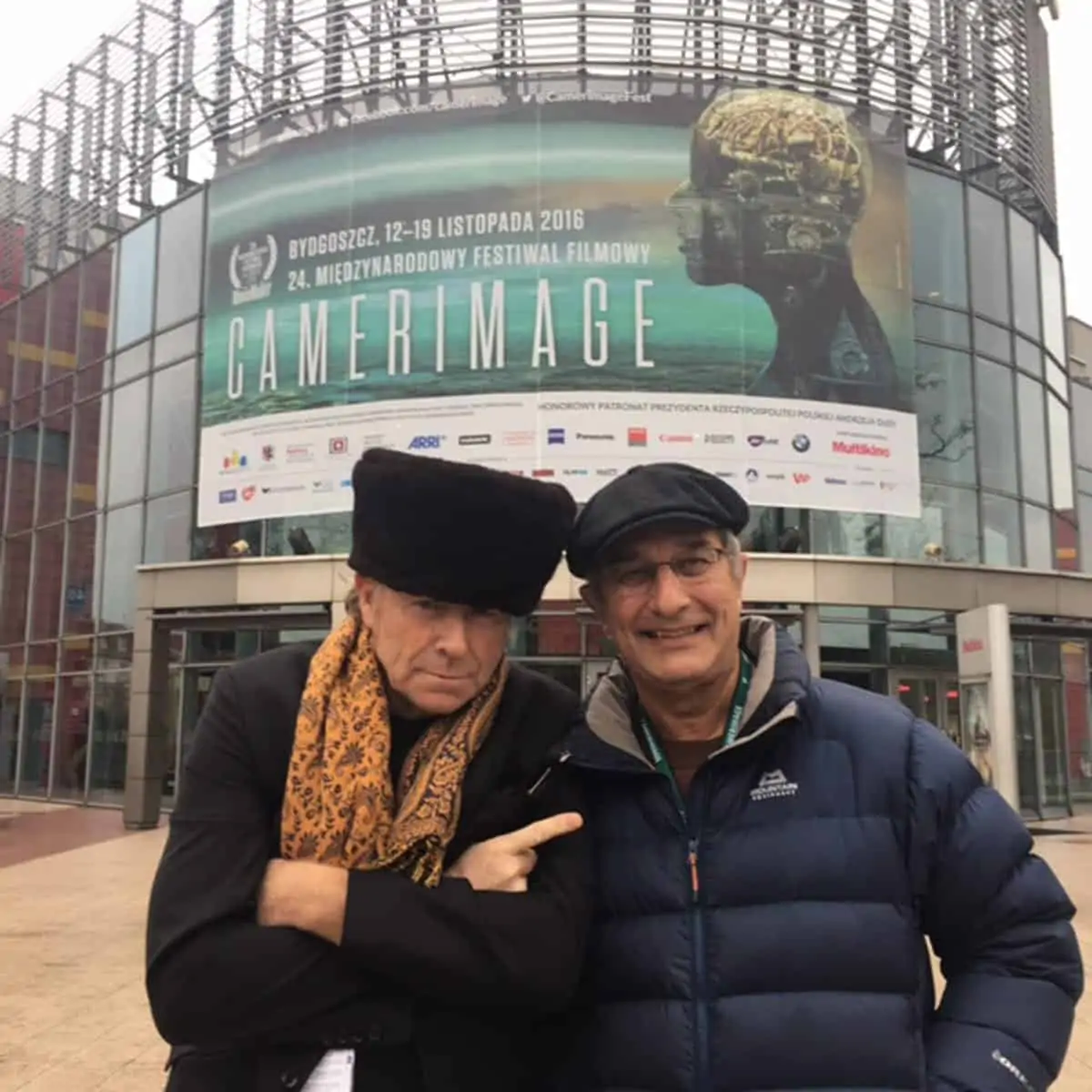
"Wielding a thick and ominously-long wooden walking stick, Michael Chapman entertains the audience with anecdotes about his camera-operating adventures with the likes of Gordon Willis ASC and experiences on The Godfather. "
- Ron Prince
Tuesday 15th November:
Oliver Stapleton BSC, Michael Chapman ASC, Roberto Schaeffer AIC ASC, Vittorio Storaro AIC ASC and director Michal Apted, are variously dotted around the breakfast room. I sit with Anthony and Tony Pierce-Roberts BSC, both here on the first-ever Debut Directors jury. As we discuss the need for the director and cinematographer to work in harmony, I can’t help but notice the perfect harmony of bacon and eggs on TPR’s plate, and succumb to temptation. Later at breakfast, Bob Hoffman of Technicolor in LA tells me how HDR will be one of the big pushes from the company in 2017, and Ed Lachman ASC laments the passing of Wolfgang Suschitzky BSC.
The ram-jammed morning session over at the MCK is devoted to the work of Michael Chapman, this year’s Lifetime Laureate. Wielding a thick and ominously-long wooden walking stick, he entertains the audience with anecdotes about his camera-operating adventures with the likes of Gordon Willis ASC and experiences on The Godfather. This includes an hilarious yarn about a trick Marlon Brando pulled on him – during Vito Corleone’s death scene in the tomato patch – when the actor mischievously misdirected Chapman as to his ultimate collapse, leading to a bump in the final camera movement as the fledgling camera operator faithfully followed the action – which Coppola went with in the final edit.
A quick nod, enabling a quick bite at the Opera Nova, and then it’s back to the MCK for Dan Sasaki’s lens workshop. Well not quite. The place is so jammed that the presentation is being screened on monitors to crowds in the vestibule. After taking notes about Dan and his work with Mandy Walker ACS on Hidden Figures, Greig Fraser ACS ASC on Rogue One, Jess Hall BSC on Ghost In The Shell, plus thoughts on Anamorphics, Sphericals, anti-reflection coatings, fall-off, bokeh, texture, creaminess and depth-of-field, I catch the back-end of Canon’s C700 workshop back at the Opera Nova. I then stay for the duration of Michael Seresin’s well-attended discussion about Choosing Lenses For Feature Films, sponsored by CW Sonderoptic. He talks about his love for Schneider lenses when starting-out and his enduring love, obviously, for Leica glass and its use on Dawn On Plant Of The Apes in 3D, and the more recent Jungle Book. “No-one is going to hire you for your technical knowledge. You will be hired for your ability to light and frame,” he advises one interlocutor. “I use smart people to handle all that digital workflow stuff, so that I can concentrate on what I know best – the dark! Obviously, I need to use lights, but for me cinematography is about how the characters move and interact in a shadow play. Within that, I really care about the lenses, and how I can use focus and depth-of-field to dramatic effect.”
Outside it’s raining hard, so I dodge the downpour at Toby Tomkin’s Cheat beer bar, neatly located across the road from the Opera Nova. Mark Purvis is gulping down an amber nectar. I meet charming DP Chris O’Driscoll, who tells me about My Angel, a remarkable film he’s just seen, shot by Juliette Van Dormael, about an invisible boy and a blind girl, whose love and friendship are tested to the limits when she regains her sight.
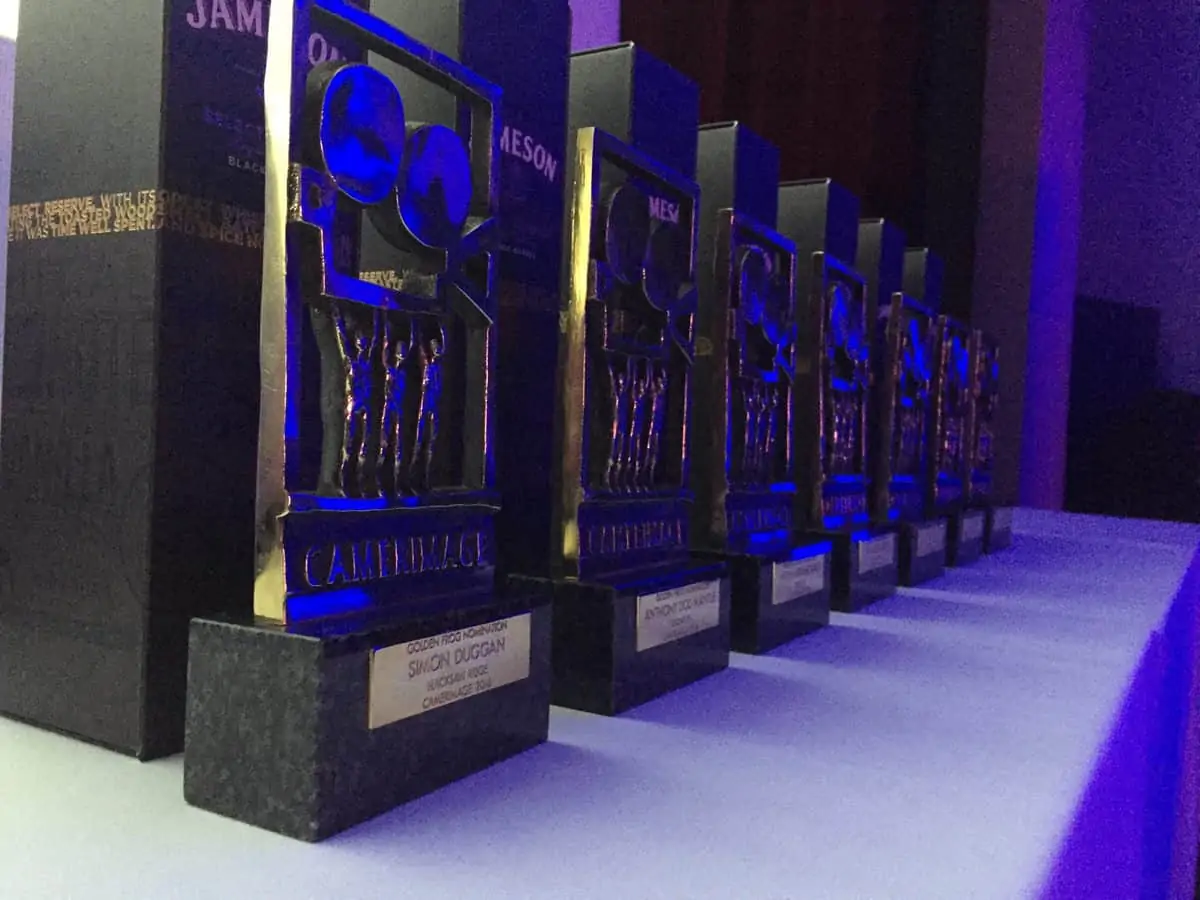
The annual ARRI Party is always a destination, with over 500 people enjoying the hospitality. ARRI’s top brass – including Franz Krauss, Dr Jorg Pohl, Martin Cayser and Stefan Shenck – all seem delighted with the turnout. In what is now a landmark of the party, Marek and Marek from Camerimage help Jorg dole out Frogs and whisky to this year’s Camerimage nominees. James Laxton proves a hail-fellow-well-met.
Back at the Holiday Inn, and a quick Apple Pie (Zubowka with apple juice) before bo-bos. Ralph Young from LEE Filters introduces Haluki Sadahiro from PV in LA, who helped create the new PanaNDs. Here’s a shout-out to Mitch, Panavision’s haulage hero, who has driven the PV truck from Greenford to Bydgoszcz, will do a full week’s work, and will then drive 950 miles back across Northern Europe – hopefully without getting waylaid by highwaymen wanting the 8K booty on-board.
Wednesday 16th November:
It’s my Son Of Saul seminar later today, but I must interview John Toll ASC first thing about his 3D/4K/120fps work on Billy Lynn’s Long Halftime Walk. The best part of two hours later, I am beckoned over to meet Ben Seresin, who has just shot The Mummy on 35mm. Our long and rangy chat rambles around the value of digital capture on cameras like the Alexa 65, and the value of celluloid capture on Kodak. I urge him to see Dr Strange, shot by Ben Davis BSC, a hybrid, which successfully used both. I pass a very pleasant few minutes with Michael Chapman who is very happy to be in Poland and delighted with his award.
Aron Jaszberenyi, Bill Feightner and Nacho Mazzini from Colorfront tell me about their Transkoder’s place in processing 8K footage coming from the DXL. I learn somewhere along the way that there’s a shoot-out in Budapest with a variety of sharp-shooting, large format cameras under scrutiny.
There’s a large and expectant crowd at the MCK for Son Of Saul. But OMG! Someone, somewhere has made a boo-boo with the projector lenses, and the movie cannot be screened as it was artistically conceived. Although he must be frustrated by the lack of a screening, Matyas proves a star in our Q&A, and together we plumb the depths about the creative, technical and practical reasonings he and director Laszlo Nemes took on this end-to-end photochemical production.
Nod. At ARRI’s Big Screen Event, filmmaker Richard Ladkani presents a 40-minute extract from his acclaimed Netflix feature-doc, The Ivory Game, co-directed with Kief Davidson. In the on-stage Q&A, he discusses the reasons he chose ARRI’s Amira for the project, one of them being its ability to run-and-gun in some unpredictable conditions.
As normal, Panavision’s party is cheek-by-jowl, with VIP DPs galore. Nancy Schreiber ASC is hoping to come to the UK to shoot a movie based on one of my favourite books, Jim Crace’s Being Dead, and she’s intrigued by DIT Peter Marsden’s lovely Leica camera and spare lens holder. In a marquee outside, a large icy vodka luge, carved in the shape of a PV lens, is being sluiced by Rob Hardy BSC and a queue of willing gulpers begins to form.
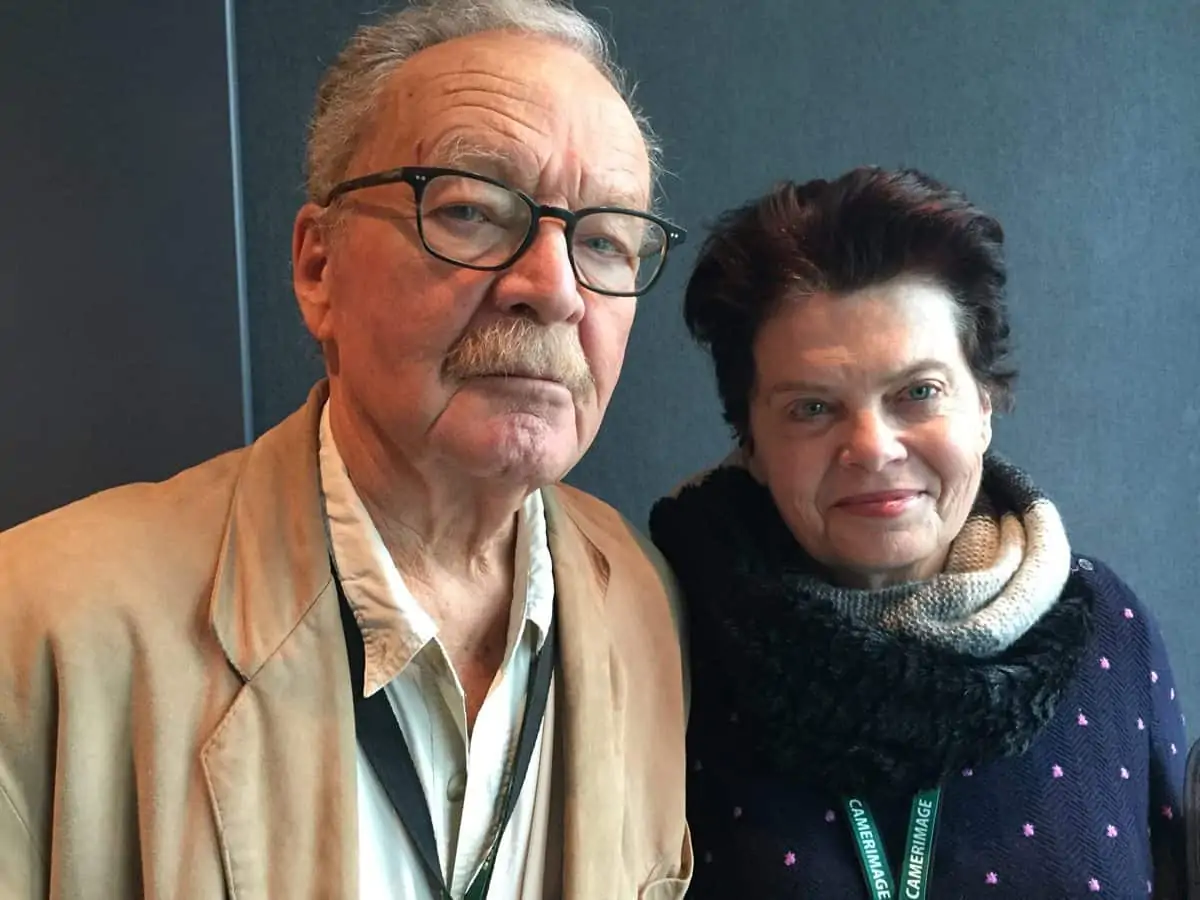
Thursday 17th November:
Owsianka and TPR’s bacon and eggs. Nina Kellgren BSC is off to the Opera Nova on IMAGO business. Oliver Stapleton BSC introduces me to production designer Dennis Gassner and his wife Amy, who are fresh from a year of toiling in Hungary on Blade Runner 2049. ARRI’s Academy masterclass, presented by Paul Cameron ASC, is about Fearless Cinematography In A Sublime Age. Assisted by first AC Joe Martinez, and brandishing an Alexa Mini, Cameron lights-up a set with ARRI illuminaires, whilst chatting about contemporary techniques in combination with LUT management. There’s a demonstration of the ARRI Trinity camera stabiliser rig, and the new Cinefade system, which allows cinematographers to vary depth-of-field in-camera during a shot. “We are living through an exciting time in the world of cinematography, with new technology enabling things that simply haven’t been possible before,” Cameron tells the huge assembly. “Smaller cameras, new stabilisation tools and unprecedented image-quality, combined with sophisticated look-management and high-quality monitoring, now allow us to be fearless on-set and to push our creativity to its limits.”
Nod. Back at the Opera Nova, Catherine Goldschmidt and Vanessa Whyte meet up for an enlightening chinwag about Illuminatrix, the collective of female cinematographers launching officially at Camerimage. Originally conceived at the Crown & Two Chairman in Soho’s Dean Street during 2015, enthusiasm has been so great that Illuminatrix now has 28 members, including Suzie Lavelle ISC, Polly Morgan BSC and Natasha Braier ADF.
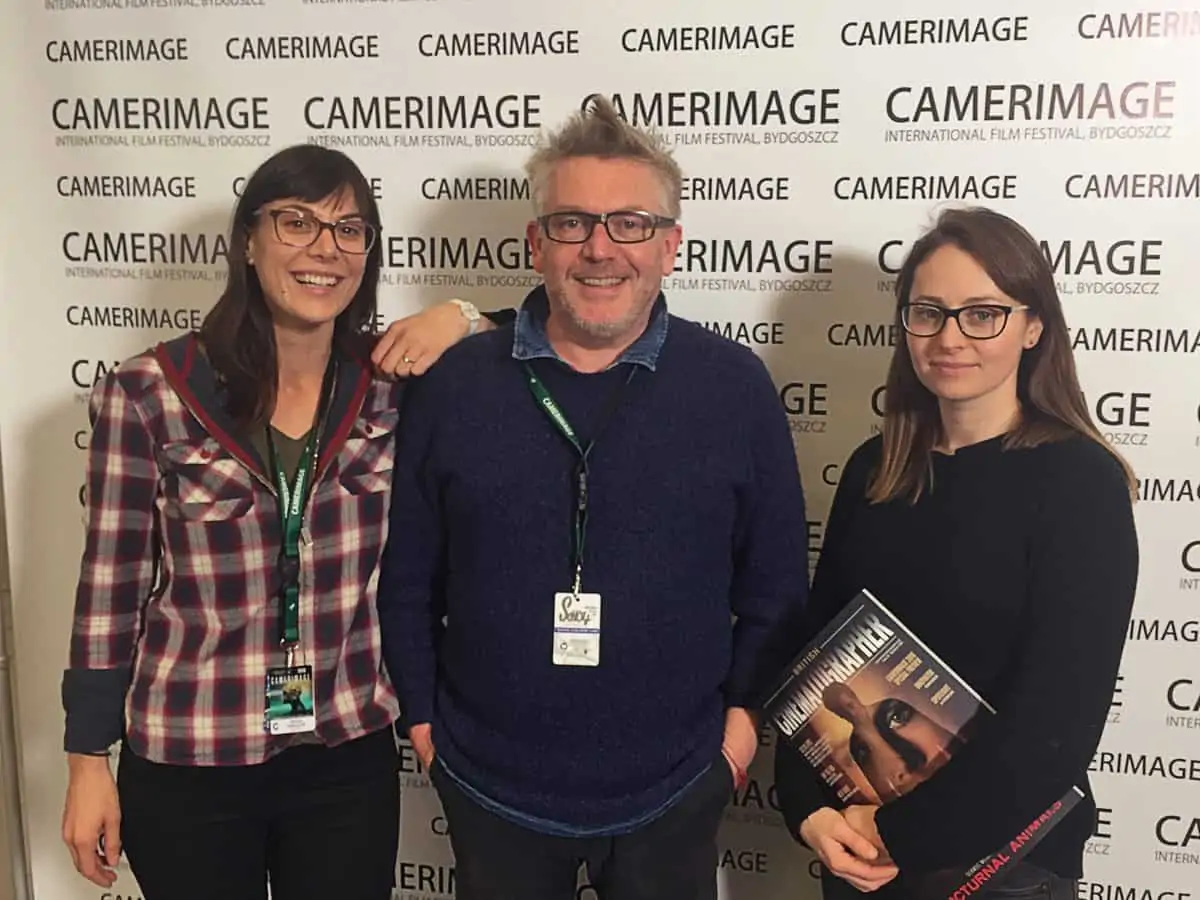
Curiously, next-up is a re-acquaintance with Natasha, who I had the pleasure of interviewing at the Cannes Film Festival too many years ago. She’s hosting a masterclass tomorrow about her work on Neon Demon. Given Natasha’s enrollment to Illuminatrix, and her extra participation in IMAGO’s Forum On Diversity, I ask her advice to other female cinematographic aspirants. “Follow your heart and chose projects that resonate with you,” she says. “Travel, enjoy different cultures. Live your life. Keep hold of your female identity and use your feminine intuition in your art. It’s just as valuable as anyone else’s.”
The Apple Pies are flowing at Panasonic’s party in the Holiday Inn, organised by Nigel Wilkes and his team. Anthony and Chris Doyle are submerged on a sofa by eager students. I finally get to meet Danish cinematographer Marcel Zyskind, whose work I greatly admire, and have the pleasure of introducing Natasha to Nancy. Adrian Bull of Cinelab London shows me a neat App enabling the secure delivery of filmed dailies, just one-hour after film processing, to iPhone, iPads and all manner of other viewing devices. Apparently, it’s quicker than digital workflows can offer. Who’d have imagined that?
I get a gentle tap on the shoulder, to discover Jannicke Mikkelsen, recent NFTS graduate, who shot and posted VR The Champions for Queen. She’s doing a masterclass tomorrow, and explains in detail how she developed and built a VR rig for the production, and all about the VR post too. Impressive!
Friday 18th November:
It’s been another great holiday, but sadly we’re outta here early. Ryanair is on-time. OMG!




